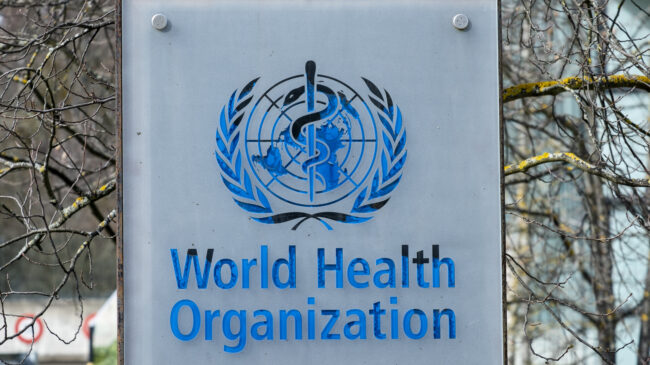On July 14, two expert committees of the World Health Organization (WHO) issued updated assessments on the safety of aspartame, a popular non-sugar sweetener found in everything from diet soda to toothpaste. One of the committees has designated aspartame as a “possible carcinogen.” The other committee has declared that it finds no evidence to change the recommended limits on daily intake of aspartame, currently up to about the amount contained in 13 cans of Diet Coke or just under 70 packets of Equal sugar substitute.
These seemingly contradictory declarations will likely cause some public confusion.
To clear up some of that confusion, it is important to understand the roles of the two WHO committees and how their seemingly incompatible declarations are complementary.
The first committee is the International Agency for Research on Cancer (IARC)—widely considered the global authority for evaluating and classifying substances based on their potential to cause cancer.
The second involved committee is the Joint Expert Committee on Food Additives (JECFA), which is administered by both the WHO and the Food and Agriculture Organization of the United Nations (FAO) to conduct risk assessments for food additives and establish safe limits on which many countries base their national standards.
Under the IARC Monographs program, the IARC investigates potential environmental causes of cancer. Expert working groups study specific substances, evaluate the available evidence, and determine the strength of the evidence indicating that a substance may be a causal factor in the development of human cancers. IARC declarations classify substances into one of four categories: carcinogenic, probably carcinogenic, possibly carcinogenic, and not classifiable. But it is important to note that these classifications indicate the strength of the evidence linking a substance to human cancer. The classification levels do not indicate IARC’s estimate of the level or degree of cancer risk a substance might represent.
In this case, IARC classified aspartame in group 2B, possibly carcinogenic, based on “limited evidence” of a link between the sweetener and human cancers, specifically liver cancer.
Although IARC declarations can shed light on potential dangers and prompt further research, they do not assess the specific circumstances in which substances might pose a cancer risk to people. As stated by IARC, the responsibility of conducting risk assessments to determine the likelihood that an additive might cause a specific type of harm, like cancer, under certain conditions or levels of dietary exposure lies with JECFA.
Such distinctions are crucial. Toxins like cyanide and arsenic are highly harmful to human health when ingested in large quantities. However, trace amounts of cyanide in foods such as lima beans and naturally occurring arsenic in rice are deemed safe. Conversely, seemingly harmless substances, like oxygen and water, can become toxic at extremely high intake levels. The dose makes the poison, as the old toxicology adage goes. In other words, substances are rarely universally safe or harmful; their potential risk to human health often depends on various factors, such as the quantity consumed, frequency of consumption, the individual consuming it, and its interactions with other ingredients. Determining the safe “dose” for food additives and when and where it is safe to use them is JECFA’s raison d’etre.
Like the U.S. Food and Drug Administration, JECFA performs risk assessments of food additives. Its committee of experts reviews all relevant evidence and assesses all potential harms to human health based on how the food additive might be used in food processing or consumed by individuals. Based on this assessment, JECFA also establishes acceptable daily limits representing the presumed maximum amount an average person can consume each day throughout their life without experiencing adverse health effects.
When JECFA first evaluated aspartame in 1981, it set the daily intake limit at between 0 and 40 milligrams per kilogram of body weight. This means that an adult weighing approximately 140 pounds could safely consume up to 2,500 milligrams (mg) of aspartame daily, equivalent to about 313 sticks of sugar-free gum every day, without apparent harm. This recommendation remained unchanged when JECFA re-evaluated aspartame in 2016 and remains the same in its latest assessment.
It is possible that the WHO hoped to avoid controversy by releasing the IARC and JECFA determinations concurrently. WHO’s press release on the reports makes it clear that the reports are complimentary. JECFA, in fact, factored IARC’s new evaluation of aspartame cancer risk into its evaluation, still concluding that “the evidence of an association between aspartame consumption and cancer in humans is not convincing,” according to Dr. Moez Sanaa, WHO’s head of the Standards and Scientific Advice on Food and Nutrition Unit. But controversy seems to stick to aspartame like sugar on freshly washed strawberries.
Aspartame is one of the most studied sugar substitutes on the planet, and its safety has been repeatedly confirmed by the FDA five times since it first granted approval in 1981, completing its most recent scientific evaluation in 2021. Yet, public skepticism toward this particular sugar substitute never seems to fully subside, with worries so numerous that they’ve earned a separate entry on Wikipedia.com.
All things considered, these twin aspartame reports from the WHO merely reaffirm the extensive body of evidence on aspartame’s relative safety gathered since the 1980s. It also continues to support the validity of JECFA’s guidance on limiting consumption–guidance that has since been adopted by countries around the globe.
While IARC’s classification of aspartame as a possible carcinogen could ignite a renewed interest in studying its impact on health, particularly among vulnerable subpopulations, it should not prompt unnecessary public anxiety or calls for new government guidelines on its use.

